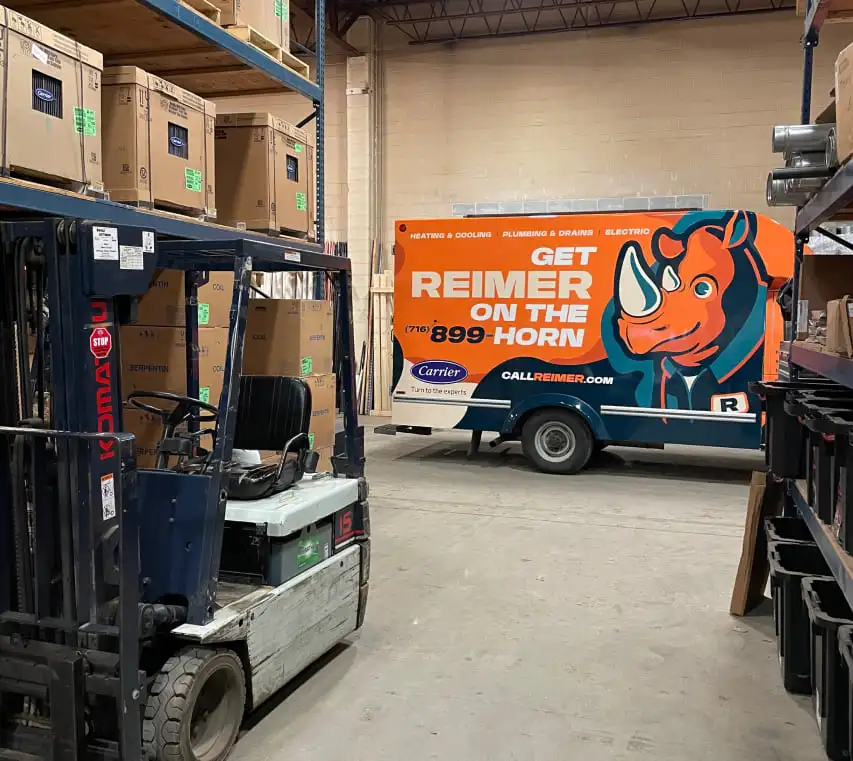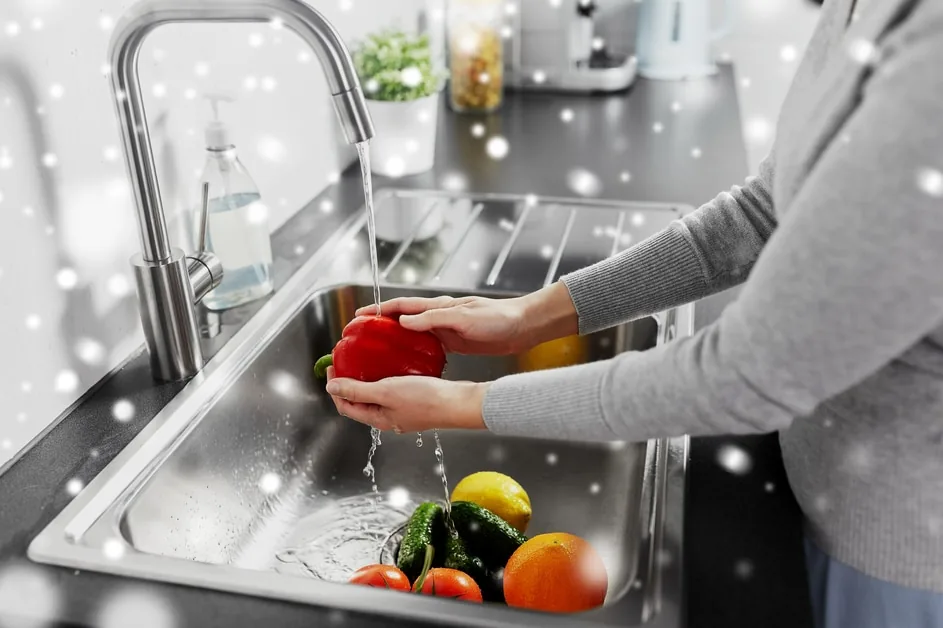It’s colorless, odorless, tasteless, and incredibly dangerous. Carbon monoxide is a poisonous gas that’s hard to detect, and it can build up in your home unnoticed until it’s too late.
Every year, more than 100,000 people in the U.S. are taken to the emergency room due to accidental carbon monoxide poisoning. Accidental CO poisoning also causes at least 420 deaths annually.
Given the statistics, it’s important for homeowners to take steps to prevent carbon monoxide from building up in their homes.
Understanding the potential sources of CO is the first step to keeping yourself and your family safe. What appliances or devices can emit carbon monoxide? By being aware of these potential sources, you can adopt a proactive approach to avoiding CO exposure and its fatal effects.
Can my air conditioner emit carbon monoxide?
Many homeowners wonder if their air conditioners could be a source of CO. The answer is no.
Carbon monoxide is produced through incomplete combustion of fuels. When fuels such as coal or natural gas are burned completely, the product is carbon dioxide or CO2. However, when there is limited oxygen, the combustion of fuels is incomplete, which produces carbon monoxide or CO.
Since most standard air conditioners are electric, your AC does not emit CO. In your home, only devices, machines, or appliances that burn fuel can be potential sources of carbon monoxide.
These may include but are not limited to:
- Furnaces
- Boilers
- Gas space heaters
- Fireplaces
- Gas or wood stoves
- Gas clothes dryer
- Generators
- Charcoal grills
- Motor Vehicles
Although these items are generally safe to use, they may emit large amounts of CO if not properly maintained or if they are used improperly.
Some of the most common ways for CO to build up in your home include:
- Blocked vents and chimneys
- Improperly installed vent pipes
- Running fuel-burning machines indoors
- Malfunctioning fuel-burning appliances
- Broken furnace
Even though your air conditioner doesn’t emit carbon monoxide on its own, it might be able to circulate CO in your home if there is a source nearby. So, it’s best to be aware of what fuel-burning appliances you are using near your AC unit and its ductwork.
Dangerous effects of carbon monoxide
Carbon monoxide is highly toxic. When you breathe too much carbon monoxide, your body replaces the oxygen in your red blood cells with it, causing serious health issues.
Since CO is odorless, colorless, and tasteless, it’s very difficult to detect it until symptoms surface. The issue, however, is that its early symptoms resemble the flu, so not many people think of CO poisoning until more serious symptoms set in.
Here are some of the symptoms one might experience when exposed to a large amount of carbon monoxide:
- Fatigue
- Dizziness
- Headaches
- Confusion
- Impaired judgment
- Upset stomach
- Vomiting
- Chest pain
- Shortness of breath
- Loss of muscle control
One way to differentiate CO poisoning from a normal bout of flu is the absence of fever and swollen lymph nodes. You’ll also notice that everyone at home is sick at the same time instead of spreading from person to person like a virus. Most importantly, you will notice that you feel much better when you’re not at home.
With large enough concentrations, carbon monoxide poisoning can lead to loss of consciousness and even death.
Other ways to detect carbon monoxide
Besides physical symptoms, there are other signs that tell you if carbon monoxide is building up in your home. Here are some things to look out for:
- Brownish or yellowish stains around fuel-burning appliances
- Soot around fuel-burning appliances
- Soot falling out of your fireplace
- No upward draft in your chimney
- Downdraft coming from your chimney
- Discolored bricks at the top part of your chimney
- Excess moisture or condensation on windows and walls
What to do if you suspect CO poisoning
There might come a time when you experience the telltale signs and symptoms of carbon monoxide poisoning. What should you do when that happens?
The first thing to do is to seek fresh air. Gather your family and exit your house immediately. On your way out, open all doors and windows to help ventilate your home. If you feel physically ill, don’t hesitate to call 911 and get to the emergency room immediately.
Once you have exited your house, you might feel better since you are far away from the source of CO. Even if this happens, do not re-enter your house until professionals have deemed it safe to do so.
The treatment for CO poisoning is oxygen. A milder case would be treated at the hospital by administering an oxygen mask, while a serious case might require treatment via a hyperbaric oxygen chamber. By providing high levels of oxygen, a hyperbaric chamber removes carbon monoxide from the body more quickly than just breathing regular air.
How to prevent carbon monoxide poisoning
Carbon monoxide poisoning is completely preventable. If you use any fuel-burning devices in your home, being exposed to CO is unavoidable. However, with the right steps, you can prevent carbon monoxide from accumulating to fatal levels.
Here are some ways you can prevent carbon monoxide from harming you and your family:
Install a carbon monoxide detector.
Install at least one carbon monoxide detector on each level of your home. When you purchase CO detectors, make sure that the units you buy are certified to the Underwriters Laboratory standard.
People who are drunk or asleep are in greater danger when exposed to CO. Some don’t even wake up to experience any symptoms and simply pass away in their sleep. That’s why when you install CO detectors, place them near sleeping areas so they can wake you up if they detect unusual levels of carbon monoxide in the air.
You can also check your local codes to see the required amount of CO detectors in your home and the recommended placement.
To ensure that your detectors are working all year round, don’t forget to replace their batteries, preferably every six months.
Run gas-powered devices outdoors.
Never operate fuel-burning appliances such as generators or camping stoves indoors. These devices should only be used outdoors and in well-ventilated areas.
Do not burn wood or charcoal indoors.
In some situations, you might feel tempted to burn wood or charcoal indoors. You might feel like grilling in your garage. When there’s an extended power outage, you might want to burn wood or charcoal indoors to keep your home warm.
No matter the case, do not do this. It is a fire hazard and will lead to a buildup of carbon monoxide, which can severely affect your health.
Don’t leave vehicles idling in the garage.
If your garage is attached to your home, do not leave vehicles idling inside, not even with the garage door open. Doing so can make carbon monoxide seep into your home through open doors or windows.
Keep vents clear of obstructions.
Ensure that your vents are clear of any debris. Check the vents for your dryer, furnace, and stove. Check your chimney. Make sure to clean them regularly and remove any obstructions to keep yourself and your family safe.
Have heating systems installed by professionals.
If you are installing a new furnace, boiler, or any other heating system, make sure to have your installation done by a qualified professional. Improperly installed equipment and vents can lead to carbon monoxide building up and seeping into your home.
Stay vigilant, and educate your family about CO poisoning.
Teach your family members about the symptoms of carbon monoxide poisoning, the signs of carbon monoxide buildup, and the importance of taking immediate action. It’s important to be vigilant and to help each other keep an eye out for any symptoms and to know what to do in the case of CO poisoning.
Have your heating systems regularly maintained.
It’s important to have your heating systems, like furnaces, boilers, and chimneys, checked and serviced by a qualified professional at least once a year. Professionals will be able to spot any potential issues that may lead to a carbon monoxide leak. They’ll ensure your heating system is working properly, fix any broken parts, and make sure your vents and chimney are clear of any debris that could cause a blockage. Regular maintenance by professionals keeps everything running smoothly and reduces the chances of carbon monoxide becoming a concern.
Schedule an HVAC tune-up ASAP.
You don’t have to worry about your air conditioner emitting harmful carbon monoxide. However, it still pays to have it professionally maintained. You can avoid a host of problems and ensure that your AC runs for a long time.
Our experts have been providing the highest quality services to Buffalo and Western New York since 1921. When you call us for AC maintenance, we’ll thoroughly inspect your unit to spot any issues that need to be resolved. When we’re done, your AC will be running smoothly and ready for the summer.
Looking for professional AC tune-up services in Buffalo, NY? Trust Reimer to get the job done!
Call us at (716) 272-2371 and schedule your AC tune-up now!





